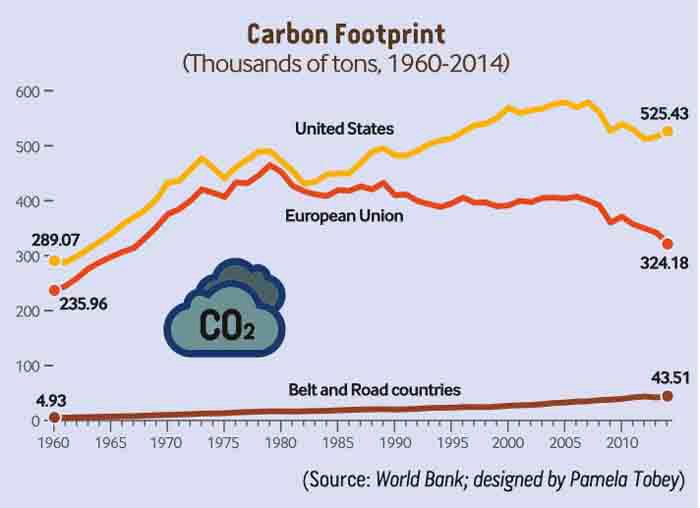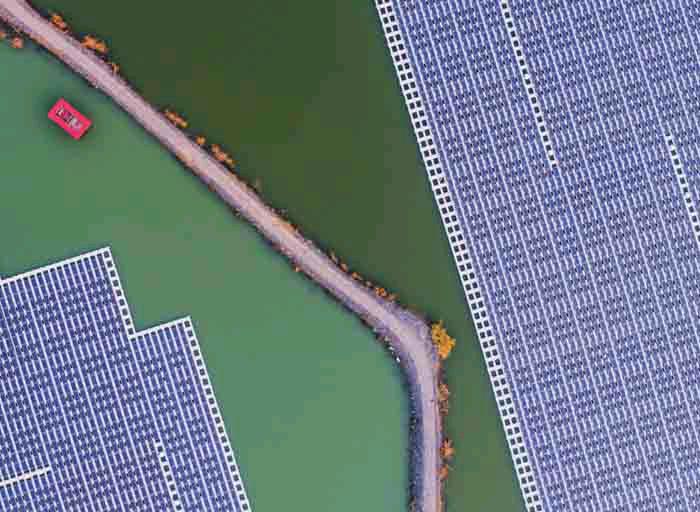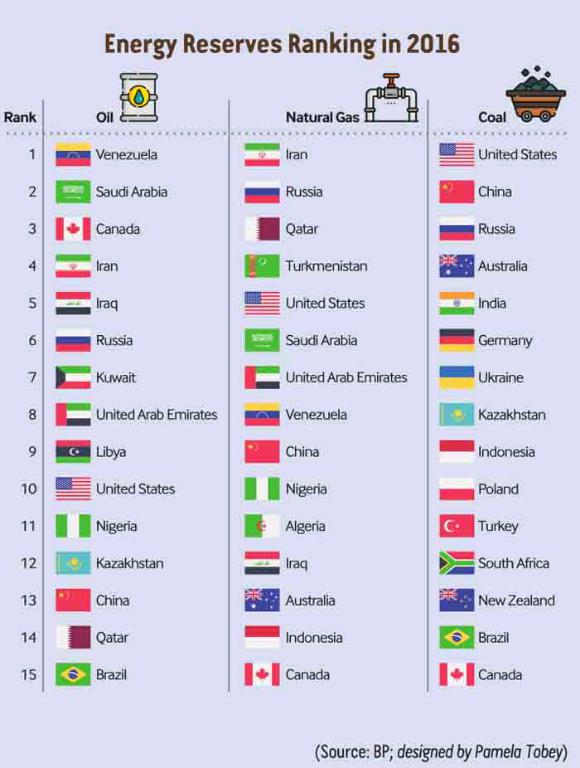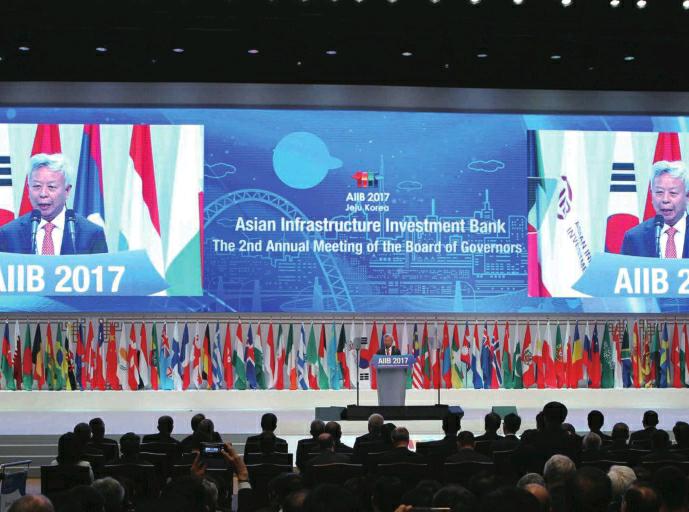Stepping Back,Moving Forward
2018-01-09ByZhengXinye&HuangYanghua
By+Zheng+Xinye+&+Huang+Yanghua
The events of the preceding two years have restructured the traditional systems of global governance which have dominated the international order since 1945. With a wave of anti-globalization sweeping the developed nations, some are beginning to look to China—the worlds second largest economy and one which is demonstrably committed to the concepts of openness and free trade. In light of the countrys own economic success over the past 40 years, there is an optimism amongst the worlds developing countries that there remains, in China, a potential leadership which is ready and willing to take the reins and usher in an era of inclusive and connected development worldwide.
In 2013, the introduction of the Chinaproposed Silk Road Economic Belt and the 21st-Century Maritime Silk Road Initiative, collectively known as the Belt and Road Initiative, outlined Chinas plans for the future of global cooperation. Through the construction of infrastructure projects funded by the newly established Asian Infrastructure Investment Bank (AIIB), the proposal seeks to build or rebuild ports, roads and railway networks which can together resurrect the historical trading routes which once engendered a golden age of economic and cultural exchange. The Silk Road aims to bring the long underdeveloped regions of Central Asia back into the global economic fold by connecting China and Europe by way of land, while the complementary maritime route targets a pan-oceanic trade network linking Southeast Asia, South Asia, Oceania and Africas east coast and beyond.
Also central to any vision of the future is green development, and Chinas agreement to the terms of the Paris climate accord in 2015 proved a major factor in that treatys ratification. At home China has continued its efforts to cut back carbon emissions. The synthesis of these two visions will have signifi cant implications for world development in the coming decades. Work however is still necessary to fully align the two strategies, and questions remain as to how the AIIB, as the fi nancier of the Belt and Road Initiative,can function differently from its international counterparts in the funding of energy infrastructure against the current backdrop of global climate change demands. Can the AIIB go beyond simply replicating other international development banks, and can it adopt a new role as an innovative alternative to the existing fi nancial system?endprint
Fact and function
Many countries along the Belt and Road are rich in resources, and harbor huge potential in hitherto untapped forms of energy. The 2016 data from BP shows that of the top 15 countries with the worlds biggest oil reserves, eight were from regions along the land route, as were eight of the top 15 for natural gas and six of the top 15 for coal. Such an abundance of resources find the countries along the routes adequately furnished with the assets necessary for fast economic development.
Yet in spite of these natural endowments, substandard energy infrastructure has been a major hurdle to their economic and social development. The latest World Bank fi gures show that in a large number of the countries along the routes, populations still lack universal access to electricity, with the energy consumption per capita of half these countries ranking lower than the world average.
With raising living standards home and abroad central to the Belt and Road vision, energy consumption will almost certainly proliferate alongside the economic development of the countries within its remit. When this happens the need for adequate infrastructure will be of clear necessity, evident in Chinas own development over the past few decades. The top priority for countries along the route, therefore, must be to resolve the structural contradiction between inadequate energy infrastructure and an ever growing need for energy.
The construction of such infrastructure will require large scale investment, high retrospective costs and long timeframes, and yet most of the countries along the Belt and Road are developing economies, with limited sources of fi nancing within their borders. Foreign funds are thus needed. However, many of them are not considered open enough to borrow money in the international capital market; nearly a quarter of the countries along the routes are not WTO members. Alledgedly low economic transparency in non-WTO member countries obstructs their ability to source fi nance from major international or regional fi nancial institutions such as the World Bank and the International Monetary Fund (IMF), and in turn stifles economic development and living standards within those countries.
Changing track
The AIIB aims to enhance the price and cost competitiveness of local energy products. It is also important for the bank to establish a set of project evaluation criteria that is distinct from those employed by existing multilateral development-focused institutions.endprint
To improve the effi ciency of production and transportation, the AIIB must focus on the construction of local infrastructure, and help countries along the routes cope with price volatility in the world energy market. The imbalanced relationship between the production and consumption of energy resources leaves some oil exporters vulnerable to price fl uctuations in the international market. In 2016, crude oil production in Iraq, Iran and Azerbaijan accounted for 5 percent, 4.9 percent and 0.9 percent of the worlds total output respectively, but the proportion of consumption in those countries relative to total global consumption was very small, standing at just 1.9 percent in Iran, and almost non-existent in the others.
The same trend is evident with natural gas. In 2016, the annual production of natural gas in Turkmenistan was 2 percent of the worlds total, but the proportion of domestic natural gas consumption to the worlds total consumption was negligible. This interplay between production and sales is critically unbalanced. The AIIB should therefore focus on improving the international competitiveness of these energy products, increasing the development and security of energy through infrastructure and bolstering local profits in any future fi nancing endeavors.
When providing loans and fi nance, the AIIB must remain flexible regarding labor and environmental standards, selecting those that are compatible with the corresponding stages of economic development for the countries where investment is to be made. The worlds current institutions for financial investment are alike in their enforcement of a single benchmark for labor and environmental standards, which tends to overlook the limited financial capacity of less affl uent countries. A majority of the countries involved in the Belt and Road Initiative have low- and middle-income economies for which these expensive prerequisites for environment and labor simply should not apply. One potential solution is that such guidelines be devised with the goal of improving cost competitiveness, where both labor and environmental standards are built to accommodate the divergent levels of development in different societies, thereby lowering the fi nancial barriers to development for the countries along the route. Only in this way can the AIIB play a more effective role in the construction of energy infrastructure as part of the Belt and Road Initiative. endprint
endprint
It is also necessary for the AIIB to construct a more systematic policy evaluation system, one which seeks to f ind a balance between inclusive and green development. The generally low levels of economic de-velopment within countries along the Belt and Road naturally boast correspondingly low levels of historic carbon emissions. These countries should, then, be entitled to carbon emission permits which not only account for their minor contribution to the global carbon footprint, but grant them permission to capitalize on their energy resources in order to catalyze their own economic take off. However, the current major institutions concerned with global development such as the World Bank, the Asian Development Bank, the African Development Bank and the European Bank for Reconstruction and Development unanimously insist on a “one size fits all”policy for applications relating to thermal power loans, having terminated financial services for such projects.
The use of clean energy is a global trend to fuel green development. However, the production and storage of some clean energy like wind and solar power is largely unstable, while hydropower is a resource governed by geographic constraints. In order to power the green energy revolution necessary to bring about environmental stability, fossil fuels need to be used, and the development, production, transportation and modification of green technologies for now still rely on some degree of thermal power. Whilst the“one size fits all” policy is compliant with environmental protection standards, it nevertheless undermines the development of the new energy industry in less developed nations, and unethically imposes on those in developing countries insurmountable fi nancial barriers to opportunity.
It now falls to the AIIB to think outside the “one size fi ts all” box by adopting a fl exible financing policy and more empirical evaluation methods when choosing how to distribute funds along the Belt and Road. In this way, and by continuing to strive toward the long term goals of environmentally sustainable development, the AIIB can provide fi nancial support for developing countries in a way that other multilateral organizations right now are unable and unwilling to do.endprint
